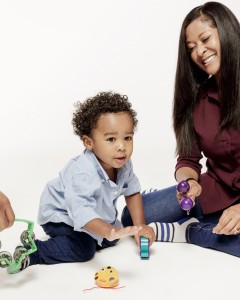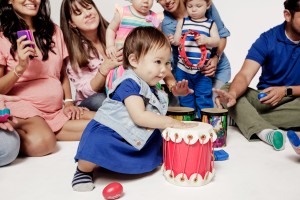Ever wonder why you can remember every song from summer camp, but can’t recall the words to the latest Justin Timberlake tune that’s been taking over your Pandora playlist?

It’s related to how music is stored in memory—or, more precisely, how adequately it was stored there in the first place and how easily accessible the memories are. We have the capacity to develop remarkable mental storage systems, though occasional sloppy filing may make some memories difficult to retrieve.
Establishing systems for memory and learning is an essential childhood task. Children’s brains are, in a sense, doing double-duty. As they process, categorize, and store many types of information to memory, they are also busily forming the very neural structures that perform these tasks.
A key element of the mental construct to form music memories is audiation, a cognitive process that occurs when we “think” or create music. One aspect of audiation is the ability to hear music when it isn’t physically present—something we all do, say, in the shower. Audiation first helped us to learn the song and create an aural memory of it. It then helps us retrieve the memory so we can sing while we soap up!
It’s really quite an impressive series of events. When we hear a song, our brain first gains an overall impression of the music. Then it begins to analyze its structure (tonality, rhythm, where the strong beats are, etc.). Next, it compares and contrasts the song with all the other music stored in our memory (that sound is a violin; this is classical music; it’s a waltz, etc.). Then it predicts the likely paths the piece of music will take. (We will be astonished if the waltz ends with a crashing electric guitar chord!)

These are fairly rapid, preverbal processes, and the first two steps are, to a surprising degree, inborn. Just as children are predisposed to decode the language of their culture, they are also predisposed to decode the music of their culture. Infants are alert to changes in pitch, can discern differences in meter, and can recognize whether two melodic contours are similar or dissimilar. A recent study even showed that one-year-old children could recognize a song they hadn’t heard since they were in the womb!
Clearly, we are all born with certain inborn musical abilities. Like so many potentials in the child, however, natural music aptitude cannot flourish without a sufficiently rich environment. Music, like language, is a complex, learned skill that requires support. It takes time to develop basic music competence and create the mental structure for understanding and categorizing music. It’s important for children to be exposed to a wide range of song styles, tonalities, and meters throughout early childhood, and to have many opportunities to experiment and actively play with music.
“Early experiences in Music Together help create the child’s mental structures for understanding music,” says Music Together Director of Research Lili Levinowitz, Ph.D. “Before the child develops the ability to sing in tune and move with accurate rhythm, it’s difficult for them to store music memories adequately. Once they achieve this basic music competence, however, it’s as if they’ve constructed a musical chest of drawers. Now the structure is complete, and they can store whole songs and chants for later retrieval.”
A family participating in all nine Music Together song collections will develop a repertoire of over two hundred songs. A young child with that kind of musical breadth is likely to develop strong audiation skills, and their “musical chest of drawers” will start to fill with music they can mentally reference, compare, and categorize as their music intelligence deepens.

A child who has just begun to sing in tune and move with accurate rhythm needs ongoing active music experiences to maintain and enhance their ability. It’s no coincidence that too many people can only sing along with recordings; they’ve never been given much support for independent singing. We’d find it funny if an adult who’d taken tennis lessons for two years announced they were going to keep up their game just by watching the US Open; how can we expect a child to maintain newfound musical skills simply by listening to their favorite songs?
A vital, engaged relationship with music at a young age creates the structures for music-learning and forms the basis for a lifelong love of music. Experiencing a wide repertoire expands one’s appreciation and sense of musical expression. Exposure to many different sounds makes them more familiar; and because we can recognize and categorize the familiar, music memory is enhanced. Best of all, that mental chest of drawers will be solidly built. With the ability to reach in and find a piece of music whenever they like, a child can be an independent music-maker for life.



